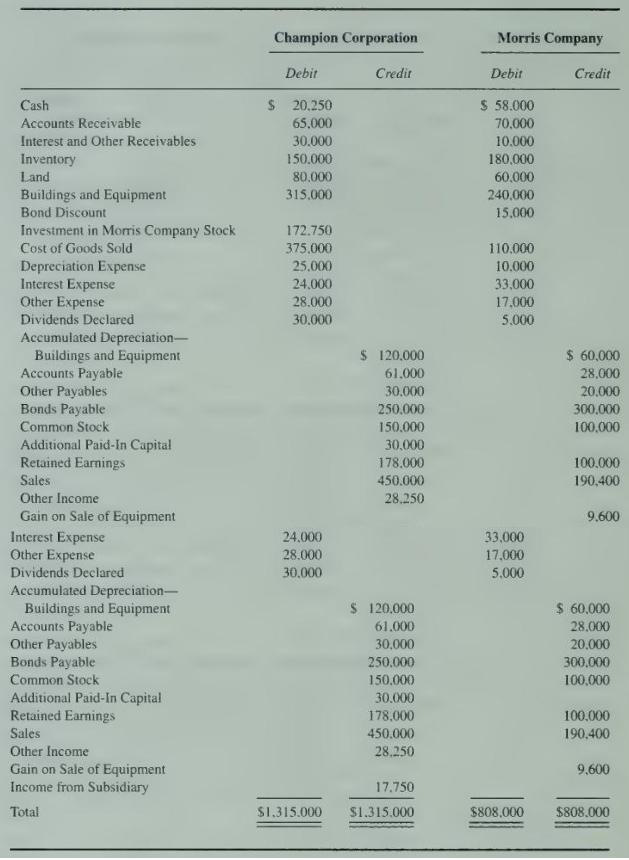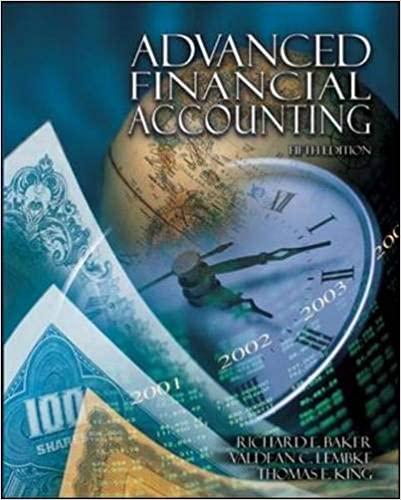Champion Corporation purchased 70 percent of the voting common stock of Morris Company for ($ 154,500) on
Question:
Champion Corporation purchased 70 percent of the voting common stock of Morris Company for \(\$ 154,500\) on January 1, 20X3, when Morris reported common stock outstanding of \(\$ 100,000\) and retained earnings of \(\$ 85,000\). At that date Morris held buildings and equipment with a fair value \(\$ 25,000\) greater than book value and a 10 -year remaining life. The additional payment in excess of book value is assigned to a copyright held by Morris with a five-year life at the date of acquisition.
Trial balances for Champion Corporation and Morris Company on December 31, 20X5, are as follows:

Champion sold land it purchased for \(\$ 21,000\) to Morris on September 20, 20X4, for \(\$ 32,000\). Morris plans to use the land for future plant expansion. On January 1, 20X5, Morris sold equipment to Champion for \(\$ 92.000\). Morris purchased the equipment on January 1, 20X3, for \(\$ 100,000\) and depreciated it on a 10 -year basis, including an estimated residual value of \(\$ 10,000\). The residual value and estimated economic life of the equipment remained unchanged as a result of the transfer and both companies use straight-line depreciation.
\section*{Required}
a. Compute the amount of unamortized purchase differential at January 1, 20X5.
b. Prepare a reconciliation between the balance in the Investment in Morris Company Stock account reported by Champion at December 31, 20X5, and the underlying book value of net assets reported by Morris at that date.
c. Give all eliminating entries needed to prepare a full set of consolidated financial statements at December 31, 20X5, for Champion Corporation and Morris Company.
d. Prepare a three-part workpaper for 20X5 in good form.
Step by Step Answer:

Advanced Financial Accounting
ISBN: 9780072444124
5th Edition
Authors: Richard E. Baker, Valdean C. Lembke, Thomas E. King





